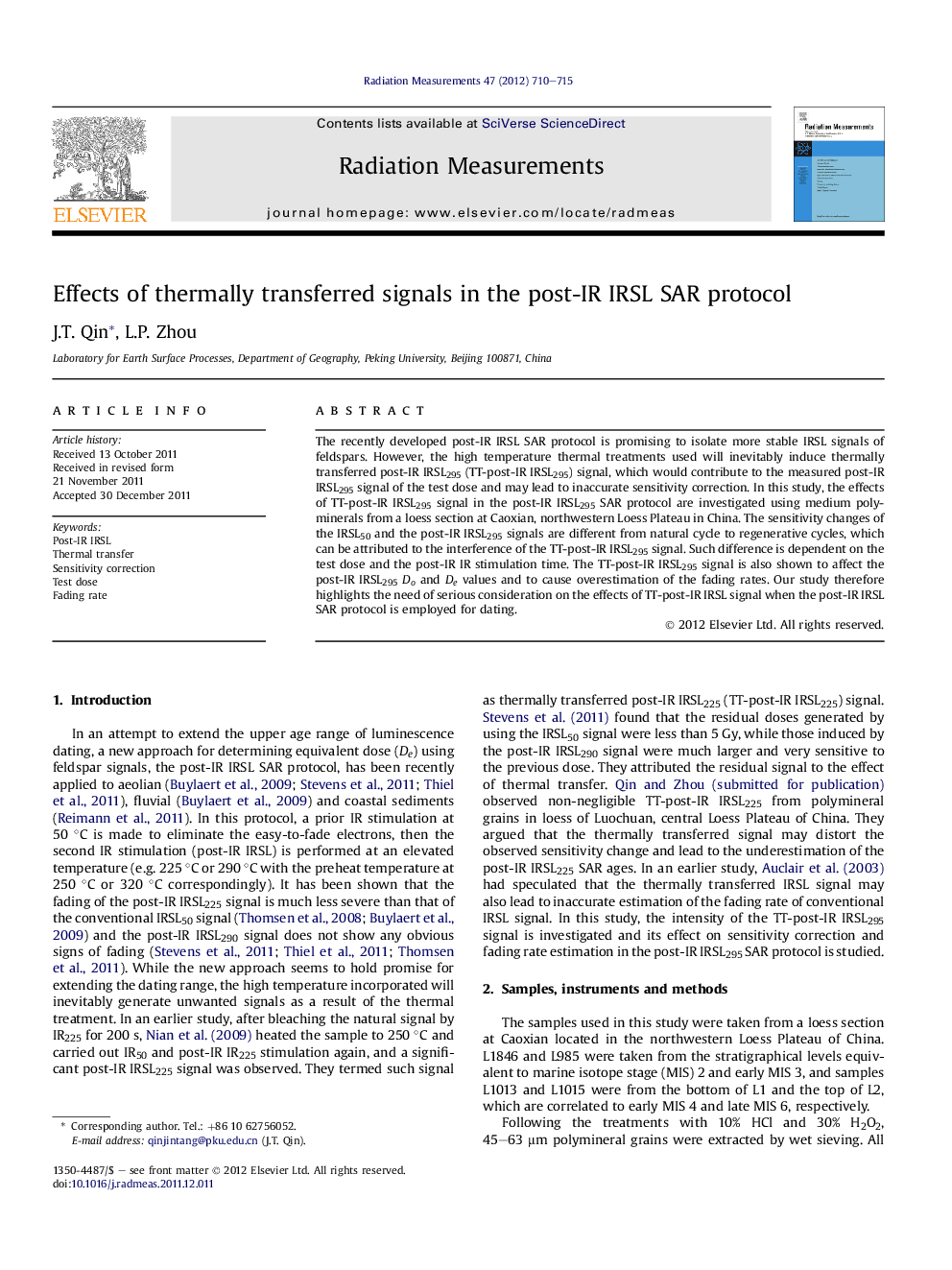| Article ID | Journal | Published Year | Pages | File Type |
|---|---|---|---|---|
| 1888468 | Radiation Measurements | 2012 | 6 Pages |
The recently developed post-IR IRSL SAR protocol is promising to isolate more stable IRSL signals of feldspars. However, the high temperature thermal treatments used will inevitably induce thermally transferred post-IR IRSL295 (TT-post-IR IRSL295) signal, which would contribute to the measured post-IR IRSL295 signal of the test dose and may lead to inaccurate sensitivity correction. In this study, the effects of TT-post-IR IRSL295 signal in the post-IR IRSL295 SAR protocol are investigated using medium polyminerals from a loess section at Caoxian, northwestern Loess Plateau in China. The sensitivity changes of the IRSL50 and the post-IR IRSL295 signals are different from natural cycle to regenerative cycles, which can be attributed to the interference of the TT-post-IR IRSL295 signal. Such difference is dependent on the test dose and the post-IR IR stimulation time. The TT-post-IR IRSL295 signal is also shown to affect the post-IR IRSL295Do and De values and to cause overestimation of the fading rates. Our study therefore highlights the need of serious consideration on the effects of TT-post-IR IRSL signal when the post-IR IRSL SAR protocol is employed for dating.
